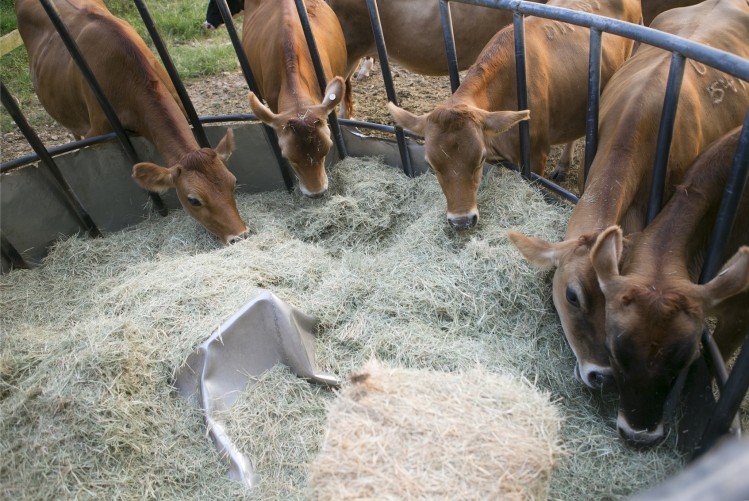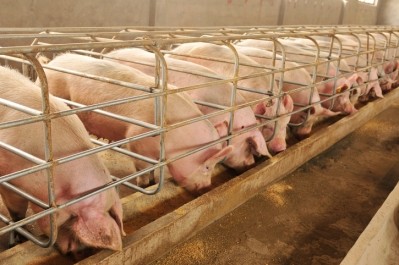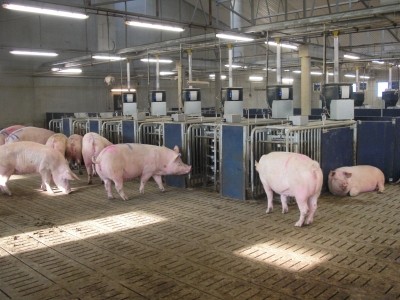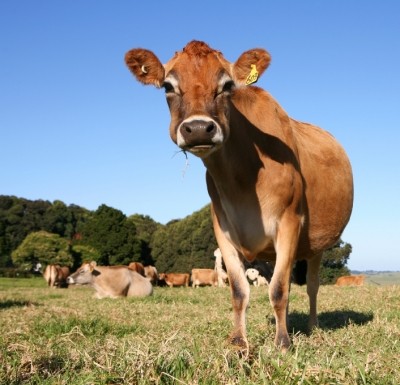Cattle diets lower in crude protein may boost nitrogen recycling

The group published its findings in the journal of Animal Feed Science and Technology.
“Therefore, the aim of this study was to evaluate the effect of sex and the levels of dietary crude protein on the recovery of 15N in bacteria, feces, and ruminal ammonia (NH3) in Bos indicus heifers and bulls,” they said. “Furthermore, the intake and total digestibility of the nutrients, nitrogen compound balance, and amounts of urea that were filtered and reabsorbed in the kidney and excreted in the urine of Nellore cattle were evaluated.”
The researchers found that there was no relation between the cattle’s sex and the amount of 15N recovered from fecal matter or bacteria. However, more urea recycling was noted in diets with low crude protein.
“[Microbial protein synthesis] increases linearly with greater intakes of CP and TDN [total digestible nutrients],” the researchers said. “Bacteria (LAB [liquid associated bacteria] and PAB [particle-associated bacteria]) have the same total-N contents and recovery of infused 15N-urea. In the lowest level of dietary CP, ruminal microorganisms can recover 32.0% of 15N from plasma, regardless of sex, suggesting greater recycling in Nellore cattle.”
Why recycled nitrogen?
Many nutritional models fail to consider that N can be recycled through the gastrointestinal tract and contribute to microbial protein synthesis, said the researchers.
“In the last edition of the Brazilian Tables of Nutritional Requirements of Zebu Cattle (BR-CORTE), the requirements of rumen degradable protein (RDP) are calculated by multiplying the protein requirement for microorganism growth by 1.11, such that the efficiency of the utilization of N degraded in the rumen for microbial N is considered to be 90%,” they wrote. “However, in the BR-CORTE, there is no reference related to N recycling that enters the GIT or endogenous N incorporation by rumen microorganisms due to the lack of national data about this subject.”
There are some challenges in evaluating the use of recycled N in microbial protein synthesis, they said. One model seeks to identify 15N 15N-urea and 15N 14N-urea in the cow’s urine.
The method works to improve understanding of urea recycling, the researchers said. But it does not offer a direct evaluation of the urea-N recycled into rumen microorganisms.
An alternative method enriched 15N in bacteria and plasma urea-N, they said. In that study with Holstein steers fed three levels of crude protein – 102g/kg, 133g/kg and 149 g/kg – it was found that the recycled urea-N used by ruminal microbiota was 17g/day, 18g/day and 30g/day.
The process also has been examined in sheep and crossbred cattle, they said. “However, there was no reference related to the incorporation of recycled urea-N as mic-N in Bos indicus cattle fed with levels of CP commonly used in livestock production,” they added.
More work is needed to better understand the process, they said.
Methods and materials
In the feeding trial, eight Nellore cattle of both sexes were fitted with cannulas and given one of four diets for a period of 14 days before they were rotated, the researchers said.
The diets offered four levels of crude protein at 90, 110, 130 and 150 g/kg dry matter (DM), they said. Feeds used were designed to offer two low, one adequate and one high level of nitrogen from the RDP requirement.
RDP was increased by including soybean meal and urea/ammonium sulfate in each diet and was calculated according to tables of Chemical Composition of Feeds, they said.
Samples of rumen digesta, fecal matter, urine, blood, feed and refusals were gathered and analyzed, they said. An infusion of 15 N 15N-urea was given on days 10 through 13 of the feeding period.
The natural abundance of 15N in the bacteria and ruminal NH3 was estimated, said the researchers. And, the 15N enrichment of the bacteria and ruminal ammonia was established and ruminal NH3 was quantified.
The 15N enrichment in LAB, PAB, ruminal NH3 and fecal matter also was established, they said. “Urea renal reabsorption was calculated by determining the difference between the amounts of urea that were filtered and excreted in the urine,” they added.
Results
There was no overall interaction between the sex of the cattle and the level of dietary CP for any assessed variable, said the researchers. Sex also did not alter intake of dry matter although the intake of digestible organic matter (OM) and neutral detergent fiber corrected for ash and protein (NDFap) tended to be higher for bulls.
Fecal excretion was higher in bulls, but there was no effect of sex on retained N and urinary creatinine excretion and glomerular filtration rates were similar, they said.
“We concluded that microbial protein synthesis was not affected by sex,” the researchers said. “The LAB and PAB had the same total-N content and recovery of infused 15N-urea. The greater recovery of infused intravenous 15N-urea on microbial protein synthesis in a low CP diet suggests greater urea recycling in association with this diet.”
Higher levels of dietary CP resulted in increased CP intake and TDN intake, they said. There was a linear increase in digestibility of CP and NDFap, but the effect was not significant for the total digestibility of TDN.
“There was a positive linear effect of the levels of dietary CP on N intake, retained N, urinary excretions of urea, and urea-N, and on the amounts of filtered urea and reabsorbed urea,” said the researchers. “The plasmatic concentration of urea-N and the UN:TN [urea-N : total N] ratio in the urine linearly increased when the levels of dietary CP increased. The increasing levels of dietary CP increased the excretion of fecal N.”
But urinary creatinine excretion and glomerular filtration rate were not altered, they said. Microbial CP (mic-CP) synthesis was improved by CP and TDN intake and fecal N excretion was influenced by body weight and N intake, while urinary N was negatively influenced by TDN intake.
Increasing levels of dietary CP had a positive effect on microbial N (mic-N) synthesis and on microbial efficiency, they said. There also was a linear effect of dietary CP on ruminal NH3 concentration, 15N-NH3 and there tended to be one for fecal 15N.
“There was no effect of the levels of dietary CP on the percentage of 15N infused in the plasma that was recovered in feces, which was on average 8.06%,” they said. “However, there was a decreasing linear effect of the levels of dietary CP on the percentage that was recovered in bacteria.”
Also, as levels of dietary CP increased, there was a linear decline on daily 15N-mic production, they said.
Source: Animal Feed Science and Technology
Title: Investigating the effects of sex of growing Nellore cattle and crude protein intake on the utilization of recycled N for microbial protein synthesis in the rumen by using intravenous 15N 15N-urea infusion
DOI: 10.1016/j.anifeedsci.2017.06.014
Authors: L. Prates, R. Valadares, S. Filho, E. Detmann, D. Ouellet, E. Batista, D. Zanetti, M. Pacheco, B. Silva















